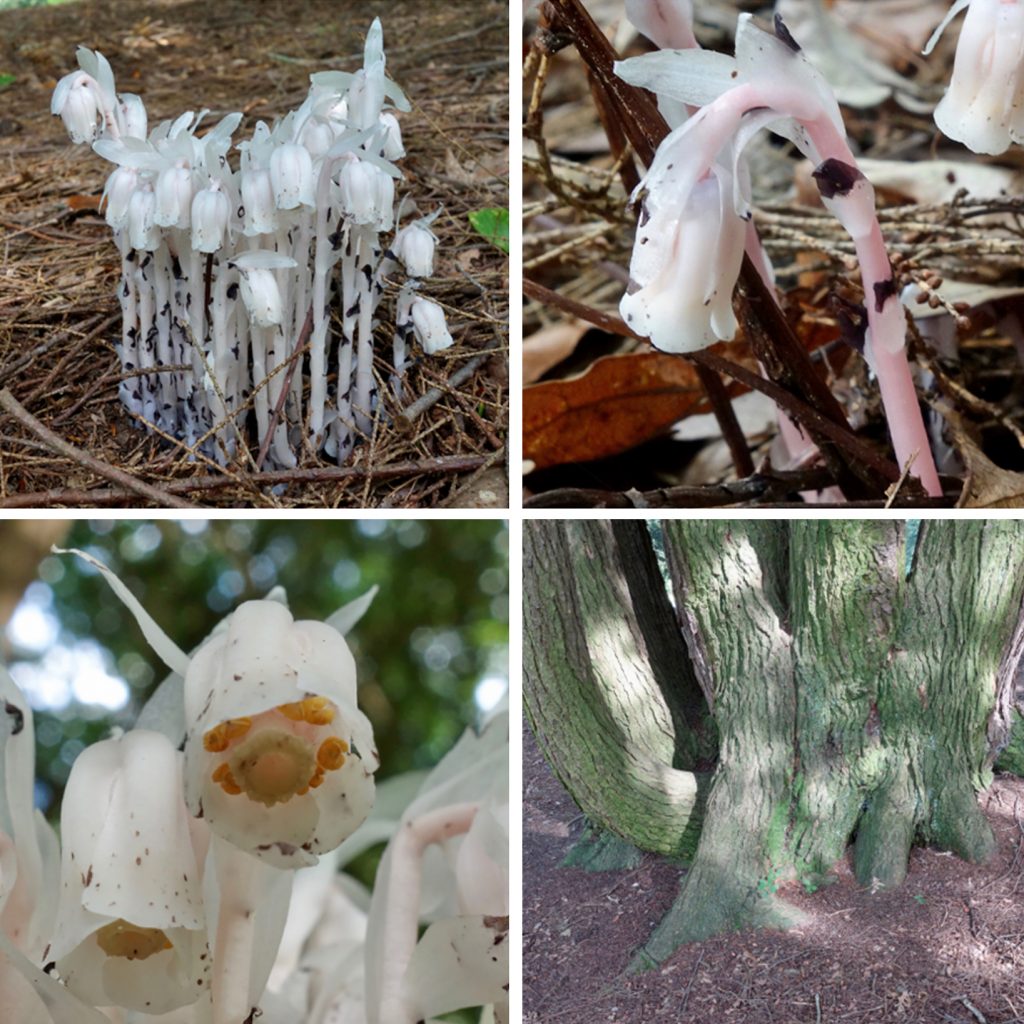At the base of Hemlock Hill, hugging Bussey Brook, are a series of large eastern hemlock trees, Tsuga canadensis (map). As always, their deep shade is welcome on a hot summer day. Carefully step into the understory and look down. You will see clusters of small white to pinkish shoots (upper images) emerging from the hemlock duff. These are the flowering shoots (flower, lower left) of Monotropa uniflora, or Indian pipe, a parasitic plant found in many temperate forests.
These delicate late summer bloomers completely lack chlorophyll, the green pigment required for photosynthesis. So where does their carbon come from? Last year, I wrote about beech-drop, a parasitic flowering plant that directly taps into the roots of beech trees and withdraws (steals) organic carbon from the host tree. Monotropa’s thievery is a bit more complicated; its connection to the hemlocks involves an intermediary. Hemlocks, like most plants, have a symbiotic relationship with certain kinds of fungi (a mycorrhizal association). The fungus gets carbon by tapping into the tree’s roots and the plant gets access to additional mineral nutrients that the fungus scavenges from the soil. This symbiosis is a two-way street in which both species mutually benefit.
Monotropa also has connections between its roots and fungi—in this case, the very same fungi found in the roots of the hemlocks. A network of fungal filaments in the soil creates a pipeline between the hemlock tree and the Indian pipe. But, rather than providing carbon to the fungus as the hemlock does, Monotropa cheats and has evolved a way to coax carbon from the fungus. Monotropa is parasitic upon a fungus that is in a symbiotic relationship with a hemlock tree (lower right, 2880-98*A). Thus, all of the carbon building the body of the Indian pipe was actually captured from the photosynthetic activity of the hemlock trees above you. And as for hemlocks throwing a dense shade, Monotropa could not care less. No need for sun if you can’t photosynthesize.


